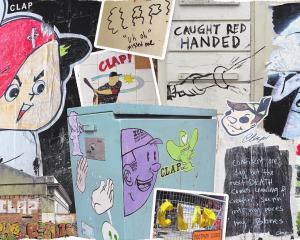But police and Waka Kotahi NZ Transport Agency say they will stay the course.
AA Otago district council chairman Malcolm Budd, of Dunedin, said the association was concerned about the 11 road deaths over the past two weekends.
It supported the idea of Road to Zero, but was disappointed by the recent fatalities, he said.
The strategy, implemented in 2020, aims to reduce deaths and serious injuries on New Zealand’s roads by 40% by 2030, and to zero by 2050.
It replaced the previous Safer Journeys strategy which failed to achieve a goal of a sustained drop in road fatalities between 2010 and 2020.
Mr Budd believed the Road to Zero strategy was heading in the wrong direction.
The three biggest issues were enforcement, accountability and road maintenance, he said.
"People are just basically doing whatever they want, as far as driving is concerned", Mr Budd said.
The recent single vehicle crash near Lookout Point Fire Station on the Southern Motorway, which left the driver dead, was an example.
"The speed limit is 60kmh. If he was doing 60kmh, it wouldn’t have happened," he said.
A lack of police enforcement meant offenders had a slim chance of being caught.
Waka Kotahi was overly focused on lowering speed limits and running advertising campaigns at the expense of improving roads.
There should be a greater focus on how people were taught to drive, Mr Budd said.

"We do our best to be visible and take action where we see bad behaviour, but we can’t be on every single road and every single highway.
Reducing New Zealand’s road toll required an effort from everyone and people should talk to their loved ones about their risky driving behaviours.
Enforcement was undertaken where appropriate, focused on factors which directly contributed to harm.
In some cases alternative actions would be taken.
For instance, those caught driving without a licence might be referred to community providers so they could be trained to an adequate level.
"We don’t want people ending up in the criminal justice system unnecessarily."
The 11 recent deaths were "really frustrating".
Police would remain focused on the Road to Zero strategy and continue to deal with the behaviours that caused the most harm.
Police worked with road safety experts and advocates including the AA, he said.
A Waka Kotahi spokeswoman said Road to Zero included work aimed at making roads safer, including new roundabouts, median barriers, side barriers, widened centre lines and rumble strips.
Other measures included encouraging safer vehicles and road speeds and targeting unsafe driver behaviours such as fatigue, impairment and distraction.
Current road safety priorities were "absolutely" supported by research and evidence, and other jurisdictions overseas had achieved success with the model.
Comments
I agree with the AA chap. I was a driving instructor, gave up cos (MoT LTSA NZTA) were not interested in driving instruction – only theory courses.
I was one of a few gazetted for doing Advanced Driving Assessments. For that we were trained, moderated and reassessed. They were successful but they made it compulsory for all instructors to do it (without a course) – standards dropped – so they abolished it.
It was done for the workplace, passenger service, to shorten the licence period and for Court orders.
Remember those participants were all sober and driving slower with me watching them.
I picked up many crash potentials.
So what is the biggest driver problem?
90% do not know how to steer a car. They will choose a speed and catch up with steering – rather choose a steering course and then the appropriate speed for that course. That’s why you see most white crosses on exits of bends.
I have a simple training programme that takes 5 minutes in a car park that will save lives.
The next issue was over 90% do not know the real road rules.
As for risky driving - the car is a toy, the road a playground and many drivers are like children.
Boy racers are now a role model.
Their ad campaign is so bad. It seems to say its alright to be a bad driver if you have the right gear. It should be saying don't swerve for animals you encounter at 100km. I wonder how many people have died doing just that as the rabbit or whatever hops off into the bushes. On renewing my 10-year licence, I failed the eye test so was encouraged to "have another go" and passed. I believe, when your licence expires, you should have to fully re-sit your driving test to refresh your knowledge. You cannot idiot-proof the roads. By trying to do that, you are just enabling them.







